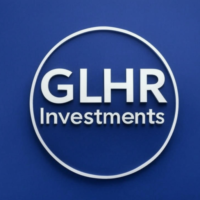
Tracking the U.S. economy’s performance in 2025.
At GLHR Investing, we cut through the noise to deliver clear insights for your portfolio. The U.S. economy in April 2025, under President Donald Trump’s second term, is navigating new policies like tariffs and tax cuts, but how does it compare to the economy under President Joe Biden (2021–2025)? With markets volatile and consumer confidence shaky, we’ve analyzed key indicators—GDP, jobs, inflation, stocks, and more—to show what’s changed and what it means for investors.
- Economic Context in April 2025:
- Current Landscape: Trump’s administration, three months in, has introduced a 54% tariff on Chinese imports, 32% on Taiwanese goods, and 25% on Canadian and Mexican imports, sparking market turbulence. A 90-day tariff pause announced April 8, 2025, calmed fears, but uncertainty persists.
- Biden’s Legacy: Biden left office with a robust economy by standard metrics—3.1% GDP growth, 4.1% unemployment, and a record-high stock market—but high inflation (peaking at 9.1% in 2022) soured public perception.
- Investor Sentiment: Consumer confidence dropped sharply in February 2025 (Conference Board Index fell to 69.6, the largest monthly decline since 2021), driven by tariff fears and rising prices. Only 18% of voters rate the economy as “excellent” or “good,” down from Biden’s exit.
- GDP Growth:
- Biden (2021–2025): Real GDP grew 12.6% over four years, averaging 2.2% annually, outpacing G7 peers. 2024 saw 2.8% growth, defying recession forecasts, fueled by consumer spending (70% of GDP) and Biden’s Infrastructure Act, CHIPS Act, and Inflation Reduction Act.
- April 2025: GDP growth forecasts for 2025 have dipped to 2.6% from 2.8% in 2024, reflecting tariff-related slowdown fears. Retail and travel demand weakened, with Delta Air Lines slashing profit outlooks due to “macro uncertainty.”
- Investor Take: Biden’s growth was stronger, but Trump inherited a solid base. Tariffs could shave 0.5–1% off GDP if sustained, per RSM estimates, making growth a key watchpoint.
- Unemployment and Jobs:
- Biden (2021–2025): Added 15.7 million jobs, the most in any four-year term, with unemployment hitting a 53-year low of 3.4% in January 2023. Manufacturing gained 750,000 jobs, boosted by the CHIPS Act. Black unemployment reached a record low.
- April 2025: Unemployment rose to 4.2% from 4.1% at Biden’s exit, with job growth slowing (272,000 jobs added in March 2025). Trump’s tariff and immigration policies may disrupt labor markets, though manufacturing could benefit from reshoring.
- Investor Take: Biden’s job market was historically strong, but Trump’s policies could shift hiring dynamics. Watch labor-intensive sectors like construction and manufacturing for tariff-driven changes.
- Inflation:
- Biden (2021–2025): Inflation surged to 9.1% in June 2022, the highest in 40 years, driven by supply chain issues, Ukraine war energy spikes, and Biden’s $1.9 trillion American Rescue Plan. By January 2025, it fell to 3.2%, with grocery prices stabilizing. Cumulative price increases of 19.3% eroded real wages until 2023.
- April 2025: Inflation ticked up to 3% in March 2025, spurred by tariff-driven cost pressures. Egg prices soared 20% since January, and consumer goods face further hikes. Real earnings growth slowed, threatening purchasing power.
- Investor Take: Biden’s inflation battle left scars, but Trump’s tariffs risk reigniting price spikes. Defensive stocks (e.g., consumer staples like Procter & Gamble) may outperform in a high-inflation environment.
- Stock Market Performance:
- Biden (2021–2025): The S&P 500 hit 80 record highs, gaining 36% overall, despite a 2022 slump. Strong corporate earnings and AI-driven tech growth (e.g., NVIDIA) fueled rallies, though inflation fears tempered gains.
- April 2025: The S&P 500 is down 4.8% year-to-date, with a $773 billion market cap loss in early April due to tariff fears. Retail (down 13%) and tech (e.g., NVIDIA -5%) sectors slumped, though a tariff pause sparked an 11% rebound.
- Investor Take: Biden’s market was a bull run, but Trump’s volatility favors cautious strategies. Consider ETFs like SPY for broad exposure or gold (GLD) as a tariff hedge.
- Consumer Sentiment and Spending:
- Biden (2021–2025): Consumer sentiment lagged economic gains, with Gallup’s Economic Confidence Index at -20 to -40 due to inflation pain. Personal savings rate fell to 4.6% by late 2024, down from 7% in 2019, as households spent to keep up.
- April 2025: Sentiment plummeted to “extreme fear” territory, per CNN, with consumers cutting back on travel, apparel, and home goods. Retailers like Target and Macy’s warn of a “bumpy year.” Only 44% approve of Trump’s economic handling, versus 33% for Biden at exit.
- Investor Take: Biden’s consumers spent despite inflation; Trump’s face tariff-driven caution. Avoid discretionary stocks (e.g., Macy’s) and favor essentials (e.g., Walmart).
- Federal Debt and Fiscal Policy:
- Biden (2021–2025): National debt rose 29% to $35.8 trillion, with a $1.8 trillion 2024 deficit. Interest costs hit $1 trillion annually. Biden’s $600 billion deficit reduction plan was offset by infrastructure and green energy spending. Debt-to-GDP ratio was 122%.
- April 2025: Debt is projected to climb to $36.2 trillion by year-end, with $1.2 trillion in interest costs. Trump’s tax cuts and tariff revenue aims could widen deficits if GDP slows. Debt-to-GDP remains near 122%.
- Investor Take: Both administrations fueled debt, but Trump’s fiscal moves risk higher yields. Bonds (e.g., TLT) may face pressure; consider inflation-protected securities (TIP).
- Sector-Specific Impacts:
- Manufacturing: Biden’s CHIPS Act drove record investment (8.9% of GDP). Trump’s “Made in America” push could boost domestic factories but faces tariff cost hurdles. Stocks like Intel (INTC) benefit long-term.
- Energy: Biden’s oil production hit record highs, but Trump’s National Energy Dominance Council has cut crude prices 5% since January. Energy stocks (XLE) may stabilize.
- Retail: Tariff-driven price hikes under Trump threaten retail margins, unlike Biden’s stabilization. Avoid Kohl’s (KSS); consider Costco (COST) for resilience.
- Investor Considerations:
- Biden’s Strengths: Unprecedented job growth, robust GDP, and manufacturing revival laid a strong foundation, but inflation eroded public trust. Stocks thrived, especially tech and green energy.
- Trump’s Challenges: Tariffs risk inflation and consumer pullbacks, with markets volatile. Tax cuts and deregulation could spur growth, but deficit concerns loom.
- Opportunities: Defensive sectors (healthcare, utilities) and domestic-focused firms (e.g., Walmart, Lockheed Martin) may outperform amid tariff uncertainty. ETFs like XLU or XLV offer stability.
- Risks: Tariff-driven inflation could trigger a 20% recession probability, per RSM. Global trade disruptions may hit multinationals (e.g., Apple, down 8% YTD). Monitor Fed rate cuts, expected at 0.25–0.5% in 2025.
- Why It Matters: The economy shapes your investments, and 2025 is a pivot point. Biden’s era delivered growth but left inflation scars; Trump’s policies promise boldness but risk volatility. At GLHR Investing, we see cautious optimism—focus on resilient sectors, hedge against inflation, and stay nimble.
Let’s build wealth through smart choices. Stay with GLHR Investing for the insights you need.









I was suggested this website by my cousin. I am
not sure whether this post is written by him as no
one else know such detailed about my difficulty. You are incredible!
Thanks!